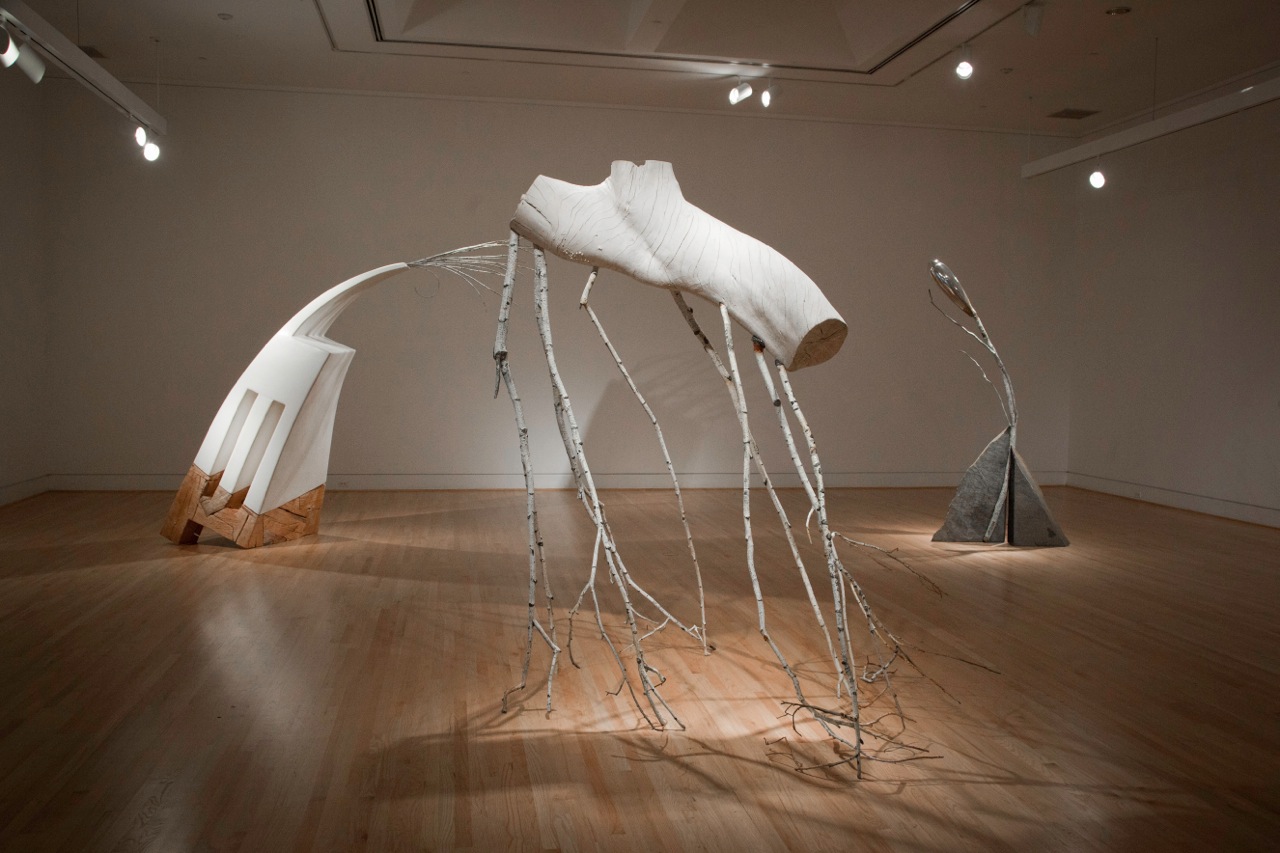David Middlebrook
Three Time Art Party Participant • Art Party Supporter
Artist Website
www.davidmiddlebrook.com
About the Artist
The merger of art and life that began a century ago with the modernist revolt against realism, and continued, at a quicker pace, in postwar America, can be now said to be complete. There are now, after forty years of conceptual art, no limits on what can be construed as art, from words on walls to gourmet dinners to interactive websites and social gaming. According to more than one critic, anything that anyone claims as art is art. Within this exhilarating but confusing context, the sculptures of Californian David Middlebrook, exquisitely crafted in the traditional materials of wood, stone and bronze (along with the contemporary addition of polyurethanes)—and no Post-Its, carved tofu or frozen blood!—look decidedly traditional; some viewers might even see them as objects of pure aesthetic delight—which they are, without apology; but they’re also, once you look beyond their beauty, time bombs of sociopolitical critique and alternately playful and scathing wit. Middlebrook, who recently retired from teaching (at California State University, San Jose), has had a long career in public art as well, so he’s well versed in the trifecta of history, theory and materials. His emergence in the Bay Area’s art world as “a thing-maker who thinks” (to employ his term) and his leap to the international stage in Basel last year, and now Venice, are thus no accident.
Middlebrook’s compelling synthesis of form and content appeals to mind and eye—and hand, if you consider his seductively tactile metal and stone surfaces (which are sometimes manipulated, in three-dimensional trompe-l’oeil, to mimic other materials). The Sacramento art critic, David M. Roth, reviewing Middlebrook’s 2011 San Francisco debut at the McLoughlin Gallery, described the artist, somewhat humorously, but I think, fairly, as “a surrealist-leaning naturalist… [whose] gravity-defying displays…focus our attention on greed, heedless consumption, political hubris, and, most of all, the ecological catastrophe that awaits us (SquareCylinder.com).” He praises the “eye-fooling patinas” and “visual sleights of hand that convincingly create the illusion of objects floating impossibly in space.” I wrote, reviewing that same show, in Sculpture magazine, that “Middlebrook’s socio-political Surrealism renders palatable a number of unappetizing issues that humanity chooses to push around the agenda plates”—namely, overpopulation, pollution, runaway consumerism, oil addiction, the destruction of the natural world, financial malpractice, political paralysis, and so on—the usual suspects familiar to the reality-based community. In these elegant yet thoughtful works, “technical expertise and virtuosic craftsmanship please (and fool) the eye: art history, political commentary and absurdist humor please (and fool) the brain.”
The art critic Suzi Gablik once outlined the logic behind Rene Magritte’s Surrealist visual paradoxes. Every painting, she wrote, in her Magritte monograph, was the solution to a problem that the artist had set for himself, the end-product on an initial stimulus; for example, the “problem of the egg,” in Magritte’s words, was solved in the painting, Elective Affinities (1933), by a colossal egg confined within a birdcage. David Middlebrook, too, is a problem-solver, employing his considerable skill set to work through and embody his ideas. He believes that art must delight, entertain, inform, and stimulate thought; the aesthetic appeal of his work makes his “business of criticizing everything” a pleasure to contemplate, helping us confront reality instead of escaping into mazes of aesthetic theory or low-information fun. Middlebrook’s memorable, ingenious artifacts do real work in the real world.
– DeWitt Cheng
*****
David Middlebrook was born and raised in Jackson, Michigan and went on to earn his M.F.A from the University of Iowa in 1970. He burst into the art world and quickly became an inspiring pioneer in a ceramic art movement that was gaining momentum in the late 1970’s. He accepted a teaching position at San Jose State University in 1974, relocated to California and has maintained a studio in the hills of south bay’s Los Gatos ever since. David has had several transforming experiences that have molded him into the artist he is today. In 1980, he gathered his family and moved to the northern tip of Australia where he held the post of visiting artist at the University of Darwin. And then in 1982 he took a similar position at the University of Natal in Pietermaritzburg, South Africa. Both experiences were one-year excursions and allowed David to explore these two remarkable countries. His travels put him in direct contact with the respective native cultures of each country and their unique artistic vision of life. This exposure proved to be quite influential in terms of content as the primitive aesthetic continues to find it way into David’s work to this day.
As a master of ceramics and all its applications, for years David had struggled with the instability of this material and found many of its characteristics to be limiting. In 1983 he traveled to Northern Italy and discovered stone and it changed his approach to art forever. Since that trip, he has maintained a professional relationship with a studio in Pietrasanta, Italy. The availability of virtually every stone in the world, a thousand years of experience and tradition in stone and their specialized technology to fabricate make this Italian resource an invaluable asset. In addition to the two trips he makes to Italy each year, David maintains his status as Associate Director of Fine Arts at SJSU, which affords him the use of the university foundry for his bronze work.
Over the last 20 years, David Middlebrook as evolved as an artist and has become a master of materials. His work today involves a broad range of stone marble and bronze and dimensions from 50 lbs. to 50 tons. He has established himself as a specialist in large-scale site-specific work. These projects have fostered collaborations with architects, design professionals, developers and contractors. He has completed approximately 50 public and private works of this nature, many of which were nationally-awarded competition commissions.



